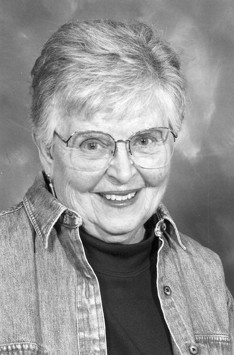Rabbitbrush Rambler: School days, school days, dear old golden...

This week I have been thinking about rural one-room schoolhouses. The sight brings out nostalgic feelings, regardless that in reality attendance at one might have required walking or riding a trusty nag some distance in miserable weather to get there and then finding no central heat, indoor toilet, lunchroom, or fancy outdoor play equipment for the sometimes reluctant scholars.
When we come upon a little rectangular, peak-roofed building today, we can’t be absolutely sure that it was, in fact, even a schoolhouse unless we know something about its history. Sometimes it turns out to have been a store or a post office, a town hall, grange hall, or meetinghouse for Penitentes or SPDTUs. Many of the structures in those days were unadorned, one-story rectangles, perhaps with a belfry identifying it as a church, firehouse, or school.
One place to see a topnotch one-room schoolhouse showing much care and pride is reached by way of a round-about road through the agricultural area northwest of Crestone to Rito Alto, where farmers were successfully growing crops of potatoes by the 1870s. Often schoolhouses, like this one, were constructed on private farms and ranches with neighborhood cooperation, and the one at Rito Alto is still carefully preserved, showing the respect of both the original builders and subsequent residents. Please respect private property.
Far across the Valley, another beauty still stands on a hillside on private, closed property at Wagon Wheel Gap where children of fluorspar mine workers once attended school. Many other fine ones like the Mirage schoolhouse along 61 Road in Saguache County have been demolished, recycled, or abandoned.
A few old schoolhouses have been designated as historic properties and are being preserved. For instance, at Crestone on Cottonwood Street, the schoolhouse, cared for by the town’s local historians, was built in the 1880s and later preserved with clapboard over its board and batten walls. This building required more length to have enough space for families of miners, ranchers, an ore mill, and even a narrow-gauge branch of the D&RG and operated until the 1940s.
The constitution of the State of Colorado in 1876 provided for a system of public schools and universities. But how well it functioned on the ground depended a lot on the life styles of local residents, parents, and teachers and on the locations of homes, which could be quite scattered.
The teachers did not always fit a stereotype. They sometimes were young girls boarding in a home and teaching pupils of all ages in one room and reading McGuffey, but some teachers were men, some were mature individuals, and some were well-educated. Some pupils spoke no English or very little, and some vanished when farm work or an illness required help at home for a period of time.
Although public education was well established, or even a high priority in many early American colonies, in other places school was the privilege of upper class families who hired a private tutor and thus perpetuated an area’s economic and social stratification, while children of lesser beings received no formal education.
Religion also played a part in the Valley as churches and benevolent societies sent nuns and missionaries whose interests included not only the basic three R’s as competitors, despite good intentions. At Mogote in the southwestern corner of the Valley, a picturesque Presbyterian place of worship also was a school. It can be seen by turning off Colorado Hwy.17.
Not all teachers were local residents. One of Mosca’s boarded a daily narrow-gauge train at Alamosa, disembarked at Mosca, and rode back to Alamosa in the afternoon on the train from Salida, provided it was on schedule. In other words, no one description of a country school fits all.
By about 1900, the old one-room buildings were serving growing populations and the familiar rectangular shape had changed, too. Look at the Mount Pleasant School west of Alamosa on Road 4S. The one we see, looking nothing like a traditional one-room schoolhouse, was the third one at that place. But it had a belfry.
Other schoolhouses built around the countryside after 1900 lack something in charm. Up beyond Capulin, Alamoso (not to be confused with Alamosa) had a functional but unpicturesque appearance. One of Adams State’s well-remembered deans attended at Alamoso, so who knows what ordinary country schools might have been incubating?
The arrival of the automobile in the early 1900s utterly transformed transportation and education in rural America and the Valley. Larger staffs and better equipment in towns had accounted for some attrition, but consolidation of rural public schools into districts wasn’t feasible earlier.
The first consolidated school district in the Valley, organized in 1915, was at La Jara, followed the next year by Sargent which boasted school buses and a teacherage. The other district schools soon followed, one by one. What the Valley needed next were teachers for them…



